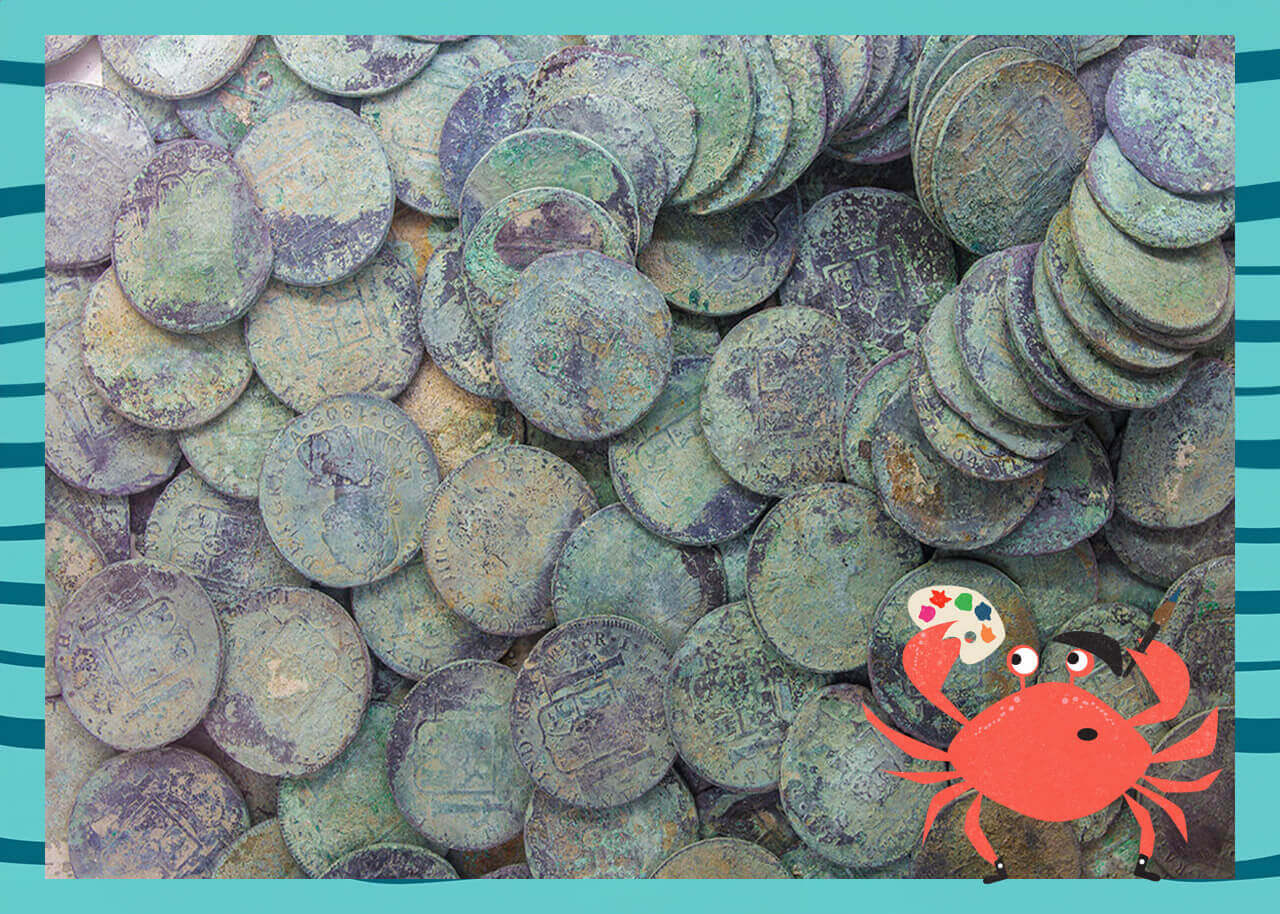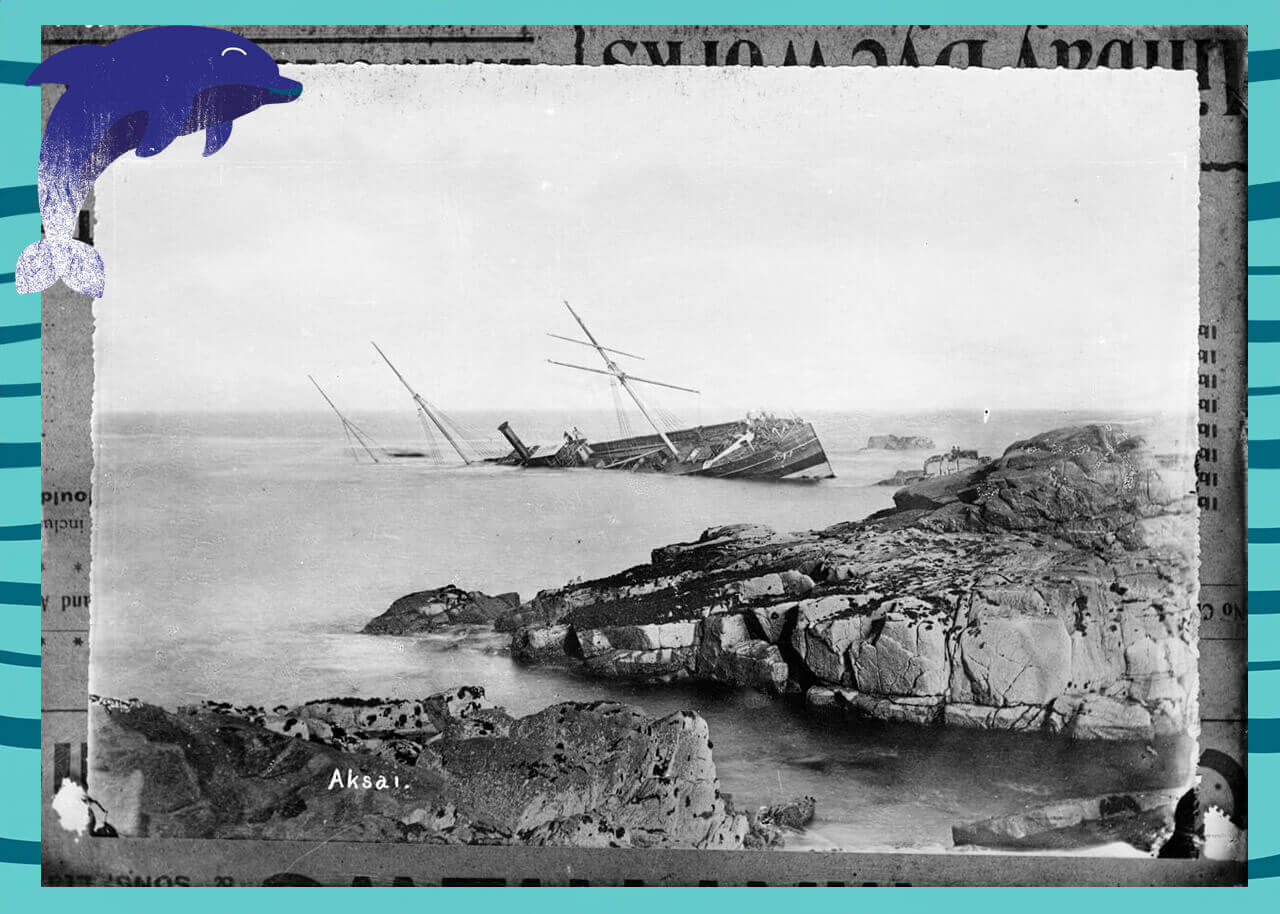Shipwrecks
When you hear the term ‘shipwreck’ what pictures pop into your head? Sunken treasure? Pirates? Trunks full of golden coins at the bottom of the sea?

Recovered silver spanish coins recovered from sunken ship © WH_Pics Shutterstock.com
Precious objects such as gold and silver coins have been found in lots of sunken ships, where the sailors or passengers had taken money with them on their travels, or were trading items in other countries. Often, coins like these in shipwrecks are heavily tarnished, where time spent in the sea or sand has eroded away the shiny finish they once would have held. Coins are not the only interesting things that have been raised from the seabed, though!
There are estimated to be over 37,000 shipwrecks in the waters around the UK, and there are many different reasons why a ship could sink. Being capsized in a storm, hitting rocks, catching fire, damage in battle, colliding with another vessel or simply human error.

The semi-submerged hull of the 'Aksai' © National Maritime Museum, Greenwich, London
Some shipwrecks are very well known such as The Mary Rose and the Earl of Abergavenny, where lots of objects were rescued, but many wrecks do not survive intact. Often wrecks are in dangerous waters where it isn’t safe to dive down to retrieve things.
But how are things rescued from shipwrecks? The wreck of the Mary Rose is a great example of just how difficult and complicated it can be to raise a wreck. It took hundreds of people over 40 years to raise, recover and conserve the wreck which is now housed in its own specially built museum in Portsmouth.
Specialist divers and underwater archaeologists work on projects like this, using lots of technology and expertise.
To explore more about shipwrecks and some of the objects that have been recovered follow these links
